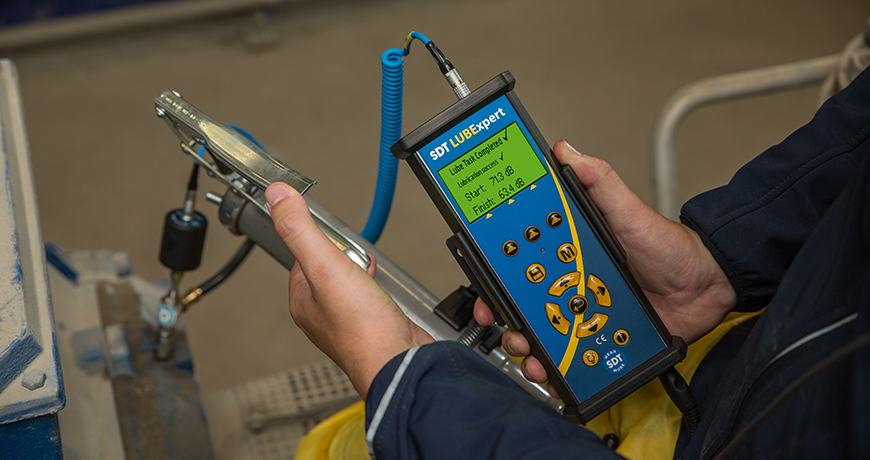Understanding the Key Components of an Effective Lubrication Program
Lubrication is often overlooked in organizations. Why it is overlooked, I am unsure. Maybe it is because it is considered to be a basic job, given to the apprentice, or it is just too simple not to do it correctly.
However, with a focus on lubrication, many failure mechanisms can be reduced and the equipment life prolonged. But implementing an effective and world-class lubrication program is not simple. It requires a dedicated focus to implement and sustain. Below is my list of what I look for when evaluating a lubrication program.

- Properly Trained Specialists – Any program worth implementing requires having staff trained properly. Depending on where the focus is, there are many different options for training and certification in machinery lubrication. The International Council for Machinery Lubrication (ICML) offers numerous certifications and levels, whether you are a technician, analyst, or lubrication engineer. Ideally, all technicians that perform lubrication activities will be trained and certified to MLT I, and those managing the program will be a minimum MLT II. Selecting the right training for your staff requires an understanding of where the program will be. Lastly, be sure to select reputable trainers in the field of lubrication.
- Proper Storage of Lubrication – A great tell-tale sign of the state of the lubrication program, is to walk through and look at the oil room. How clean is the room? Are there open containers? Are the new lubricants clearly labeled, and in sealed containers? Is old oil mixed in with new oils? Having an organized and clean storage for lubricants is vital. It is the first step to preventing cross-contamination and contamination of the oil.
- Identified Lube Points – Identified lube points is not just labeling each lube point in the field with a colored cap or tag. It may make more sense to have all of the lube points indicated on the PM procedure. The goal here is to make sure all lube points are identified, so not one is missed during the course of a lube route. The lube points also need to have the type and quantity of lubricant required (once again, this may be in the procedure or in the field).
- Avoiding Cross-Contamination – By properly labeling the lube points in the field, the chance of cross-contaminating the lubricant is reduced, but it is not eliminated. There should be dedicated containers for each type of lubricant (sealed transfer containers, grease guns, etc.). This will ensure there is no potential for cross-contaminating oils with others (as many additives are not compatible with each other).
- Preventing Contamination – Preventing contamination is critical to keeping not only the lubricant clean but the machinery as well. Preventing contamination starts with the oil room, and having desiccant breathers and filters on any drums of oil. In the field, there needs to be desiccant breathers and filters as well. Why? As the gearbox heats up and cools, the air inside expands and contracts, which pulls in external air, moisture, and anything else in the air. When it comes to greasing, it means appropriately cleaning the grease zerts and grease guns before applying grease to the equipment.
- Ensuring Clean Lubricants – Do you think that the oil coming in from the vendor is clean? It may be clean, but is it clean enough for your application? Before transferring oil from the storage container to the asset, it should be filtered to meet the needs of the asset. Use the ISO Cleanliness guidelines to help select the right cleanliness for your application.
- Oil Analysis in Place – Oil analysis should be used in two ways. The first is to understand the condition of the lubricant and make an informed decision on whether to change the lubricant or not. The oil replacement should be driven by the condition of the oil, not strictly by time. The second way it is used is to understand what is going on inside the asset by understanding wear particles, etc. The success of an Oil Analysis depends heavily on the collection and handling of the sample. Therefore, I often look for oil sample collection procedures.
- Acoustic Lubrication – This takes the time-based re-lubrication task and expands it to ensure that the equipment is neither over lubricated or under lubricated. It also provides insights into the condition of the equipment, complimenting vibration and oil analysis.
Download LUDECA’s 5-Step Acoustic Lubrication Procedure – an effective lubrication procedure to grease bearings right
- Minimal Lubricants – contamination and improves the purchasing power of the organization.
Effective lubrication takes many of the practices mentioned above and provides a governance framework to support and ensure it is executed as designed. With an effective lubrication program, the organization should see an increase in uptime, a reduction in lubrication consumption, and a reduction in the number of lubricants on site. These changes enable the organization to operate more efficiently.
Next Steps
To begin the journey to improve your lubrication program, you do not need a full assessment and massive project. Take one of the items above, learn more about it and start a pilot. Make sure to build a business case with your pilot to capture the benefits and use that as a basis to build the business case for the larger project.
Thank you James Kovacevic with Eruditio LLC for sharing this informative article with us!
Filed under:
Articles and Case Studies, Lubrication by Diana Pereda
